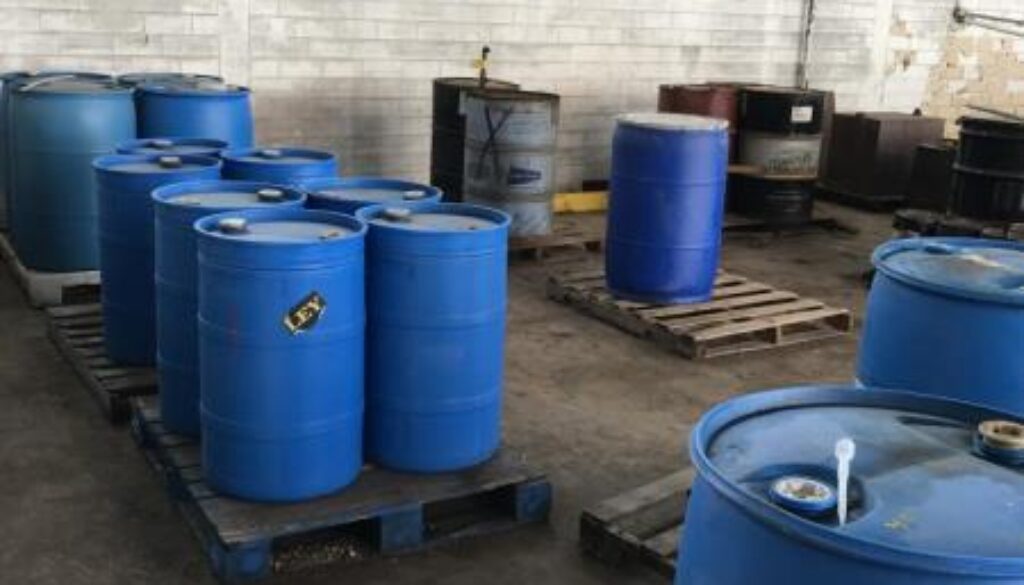EPA confirms PFAS can leach from shipping containers into food, other products
By Shannon Kelleher
Toxic chemicals knowns as PFAS leach from the walls of shipping containers into the products they contain, potentially contaminating food, pesticides, and other products transported all over the world, according to study by the Environmental Protection Agency (EPA).
The findings provide fresh evidence backing concerns that per-and polyfluoroalkyl substances used to coat the insides of shipping containers can contaminate the contents of those containers. The EPA analysis found that 8 types of PFAS compounds leached into water and methanol samples stored in fluorinated high-density polyethylene (HDPE) containers after just one day.
The EPA said the analysis provided “a clear indication” of the migration of PFAS from container walls to the liquid solutions in the container. The agency said the amount of PFAS leached into the solutions generally increased with time during the agency’s 20-week testing period.
The levels of contamination the EPA found were far higher than the updated drinking water health advisory level of about 0.004 parts per trillion (ppt) that EPA recently set for PFOA, one of the PFAS chemicals identified in the barrels.
The findings build on EPA’s 2021 study, which suggested that fluorinated shipping barrels have PFAS in their walls and that these compounds can leach into liquids stored within the containers.
In a Sept. 12 letter, Public Employees for Environmental Responsibility (PEER) called on EPA, the Food and Drug Administration (FDA), and the U.S. Department of Agriculture (USDA) to address public health concerns resulting from this source of PFAS exposure with urgent regulatory and enforcement action.
“EPA has one job and one mission – protecting health and the environment,” said Kyla Bennett, PEER science policy director. “This study was elegant, but now [EPA] needs to act on it. Studies give us knowledge, but knowledge is not regulation.”
“We need to start regulating PFAS from the moment they’re created until the moment they’re disposed of, and that’s not happening,” she added.
The EPA is urging companies that find PFAS in their products to notify the agency and take action to remove the contamination.
But Bennett said the agency should halt the use of fluorinated barrels for food and agricultural product shipments.
Bennett has a personal interest in the issue. In 2019, she discovered that wells in Easton, Massachusetts – where she lives – were contaminated with PFAS. She said the finding was surprising because there were no industries or firefighter training facilities in the area known to use PFAS.
She eventually realized that the contamination was related to the aerial spraying of a pesticide found to contain PFAS. The EPA discovered that PFAS were not an intentional ingredient in the pesticide but was leaching from shipping barrels.
“We have no idea what the scope of the problem is,” said Bennett. “We have no idea how bad the contamination issue is.” To deal with the issue of PFAS exposure more broadly, Bennett says, “we need to regulate them as a class and ban all non-essential uses now.”
“While EPA is early in its investigation, the Agency will use all available regulatory and non-regulatory tools to determine the scope of this emerging issue and its potential impact on human health and the environment,” says the EPA’s website.
“We do not have information that indicates that the containers tested by the EPA are intended for use in contact with food nor are we are aware that these containers are used in contact with food,” said the FDA. Last year, the FDA acknowledged that food may be stored within the same types of containers that EPA found leaching PFAS into pesticides.
Photo Credit: EPA
 EWG
EWG


